Pythagoras’ Theorem
The longest side of a right- angled triangle is called the hypotenuse, which is always opposite the right-angle.
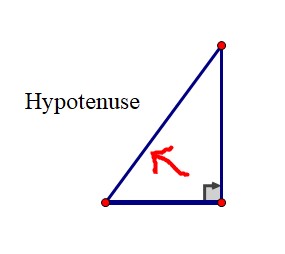
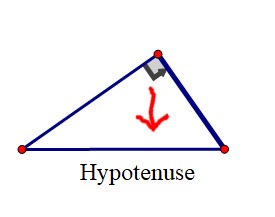
In any right- angled triangle,the area of the square on the hypotenuse is equal to the sum of the areas of the squares on the other sides.

For any right-angled triangle, this rule can be used to calculate the length of the hypotenuse if the lengths of the smaller sides are known.
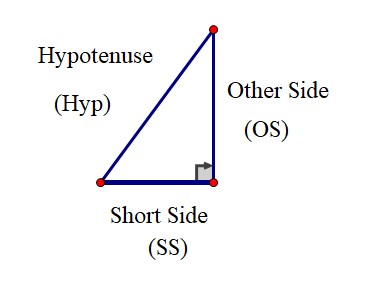
(Hypotenuse)2 = (Shortest side)2 + (Other side)2
shortens to (Hyp)2 = (SS)2 + (OS)2
or (Longest side)2 = (Shortest side)2 + (Other side) 2
To find the length of the hypotenuse
- Sketch triangle
- Mark hypotenuse
- Write out pythagoras' theorem for the triangle
(Hypotenuse)2 = (Shortest side) 2 + (Other side) 2
- Solve
- Write out solution
Example
Find the length of the hypotenuse:

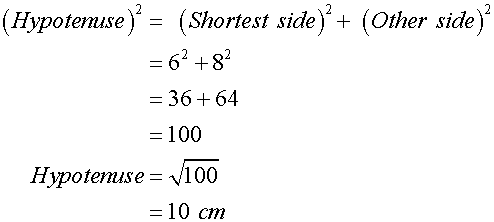
To find the length of a shorter side
- Sketch triangle
- Mark hypotenuse
- Write out pythagoras' theorem for the triangle
(Hypotenuse)2 = (Shortest side)2 + (Other side)2 - Solve
- Write out solution
Example
Find the length of the missing side:

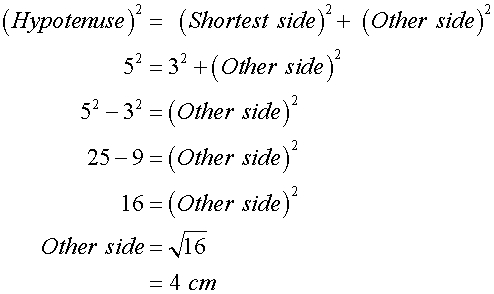
The converse of Pythagoras
If (Hypotenuse)2 = (Shortest side) 2 + (Other side)2
Then the triangle is right angled.
Example
Is this a right angled triangle ?

Make separate calculations for hypotenuse and sides.



Hidden Pythagoras
Very often, you will need to solve a question where the use of Pythagoras' Theorem does not seem obvious.
Example
Calculate the perimeter of triangle ABD. (Give your answer correct to 1 dp.)

Finding the perimeter requires the length of CD to be known.
Since ACB is a right angled triangle, Pythagoras' Theorem can be used to find length BC. Triangle BCD is also right angled, so Pythagoras' Theorem can be used again , with the value calculated for BC and the given 11 cm to find CD.
Finally, the lengths can be added to find the perimeter.

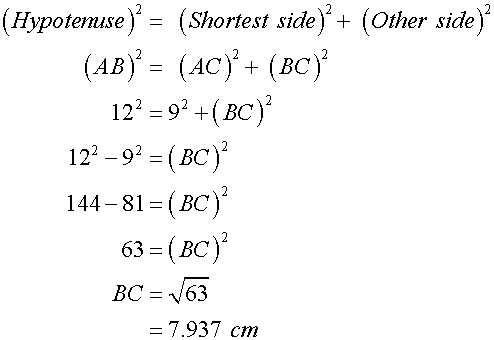
so

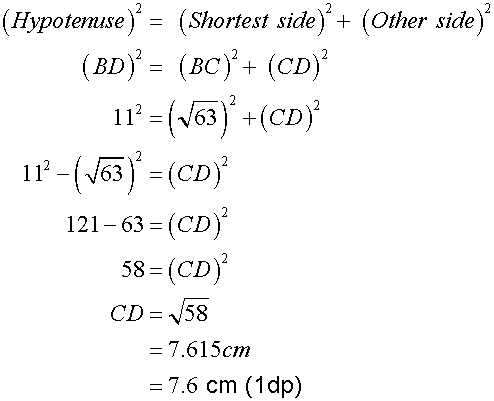
Thus
Perimeter = 12 + 11 +9 +7.6 = 39.6 cm(1 dp)
Examples
The gable of a symmetrical building is painted yellow.
Calculate the area of the painted surface.

This is a composite area, so split into two parts:

A1 is a rectangle,
so
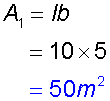
A2 is a triangle,

so
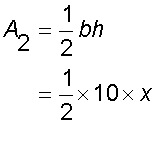
To find the perpendicular height, x
Use Pythagoras' Theorem

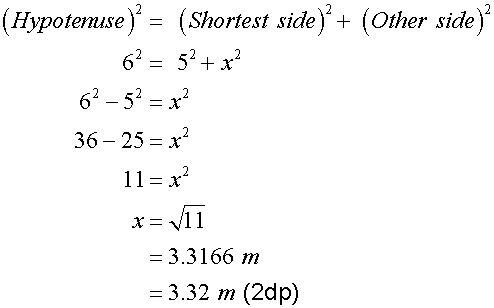
Substituting into the equation for A2 :
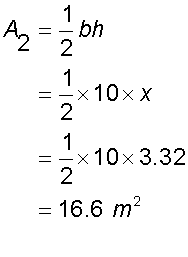
Thus the area of the painted surface
A1 + A2 = 50 + 16.6 = 66.6 m2
Pythagoras with co-ordinates
Example
Calculate the length of the line that joins the points
A(-5, 10) and B ( 3 ,0 )
Solution :
Plot the points and draw the line.

Complete the right angled triangle

solve using Pythagoras' Theorem
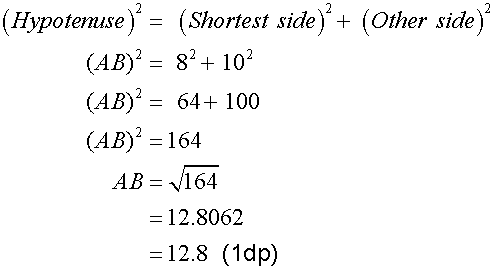
This is the basis for the distance formula
Pythagoras Drill Questions Pythagorean Triples : Listing
As an Amazon Associate I earn from qualifying purchases.
